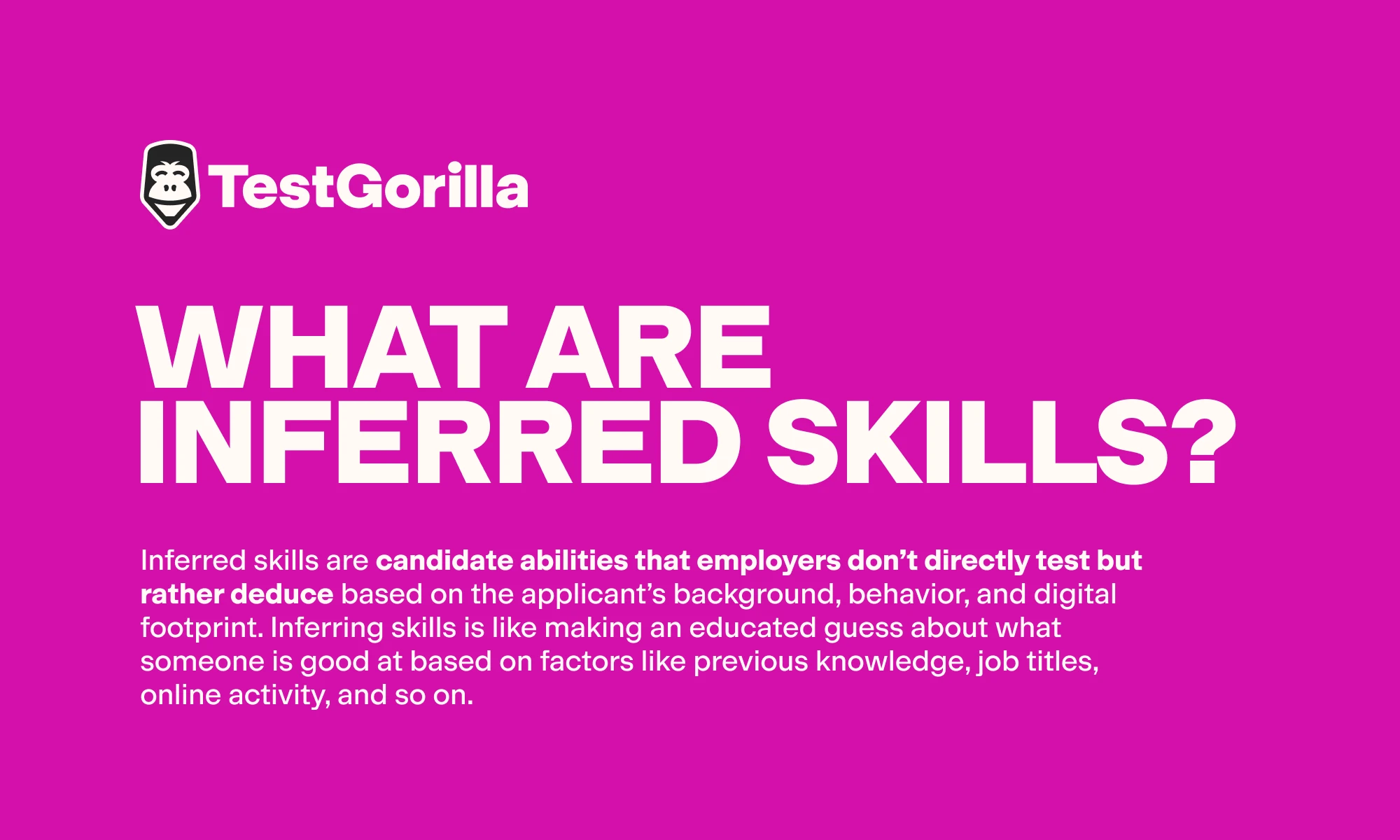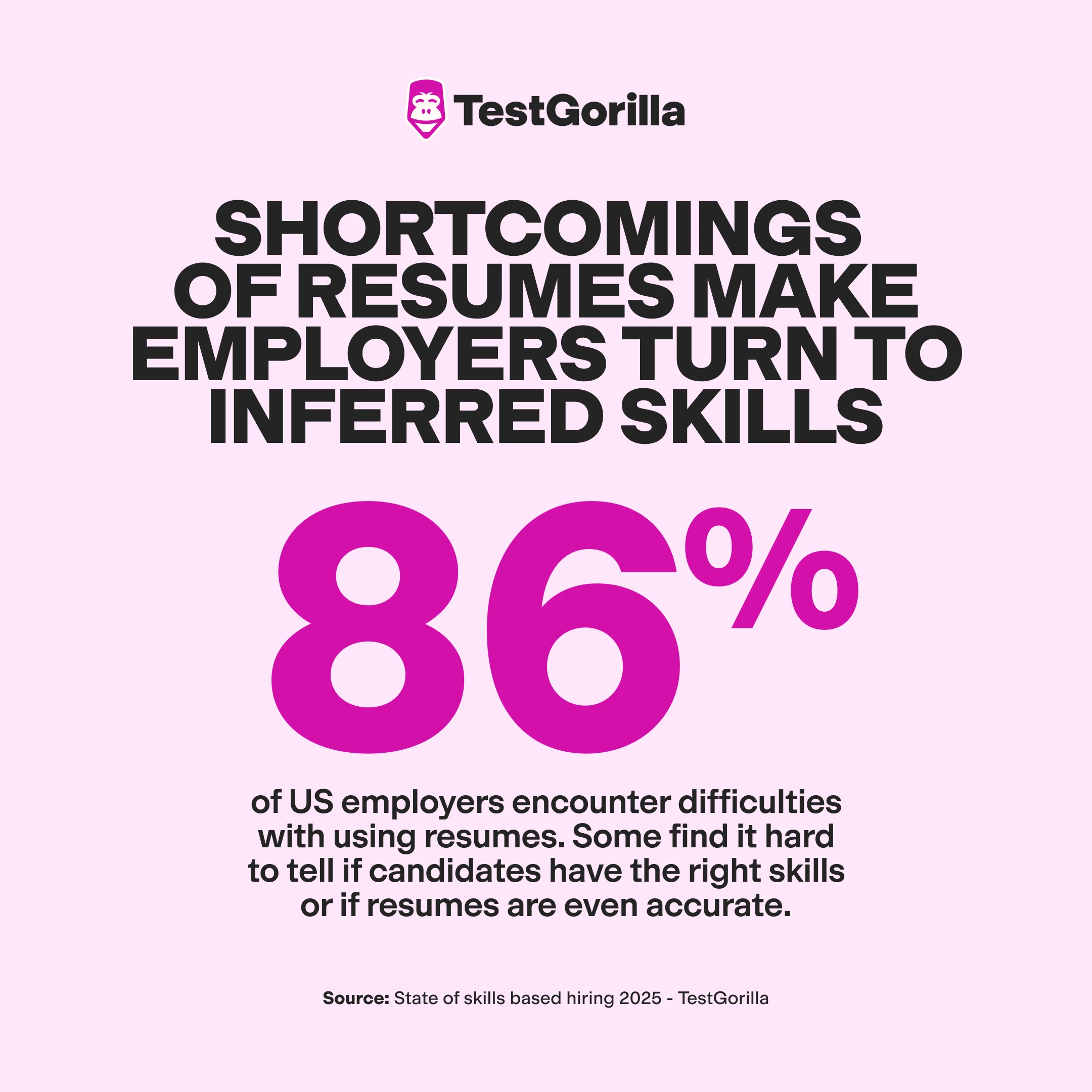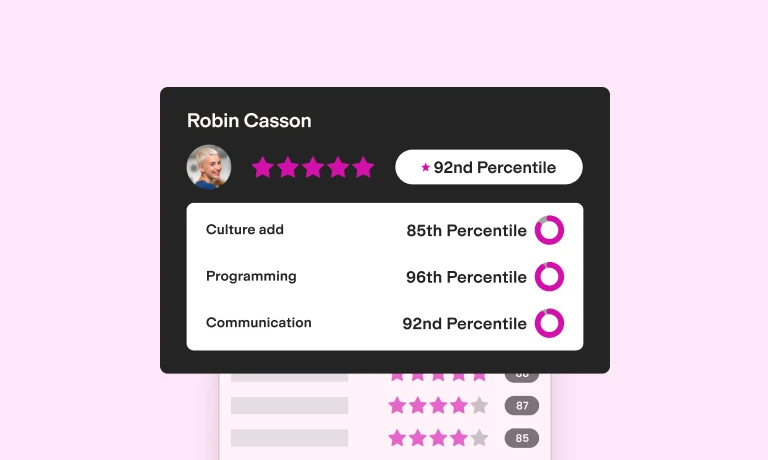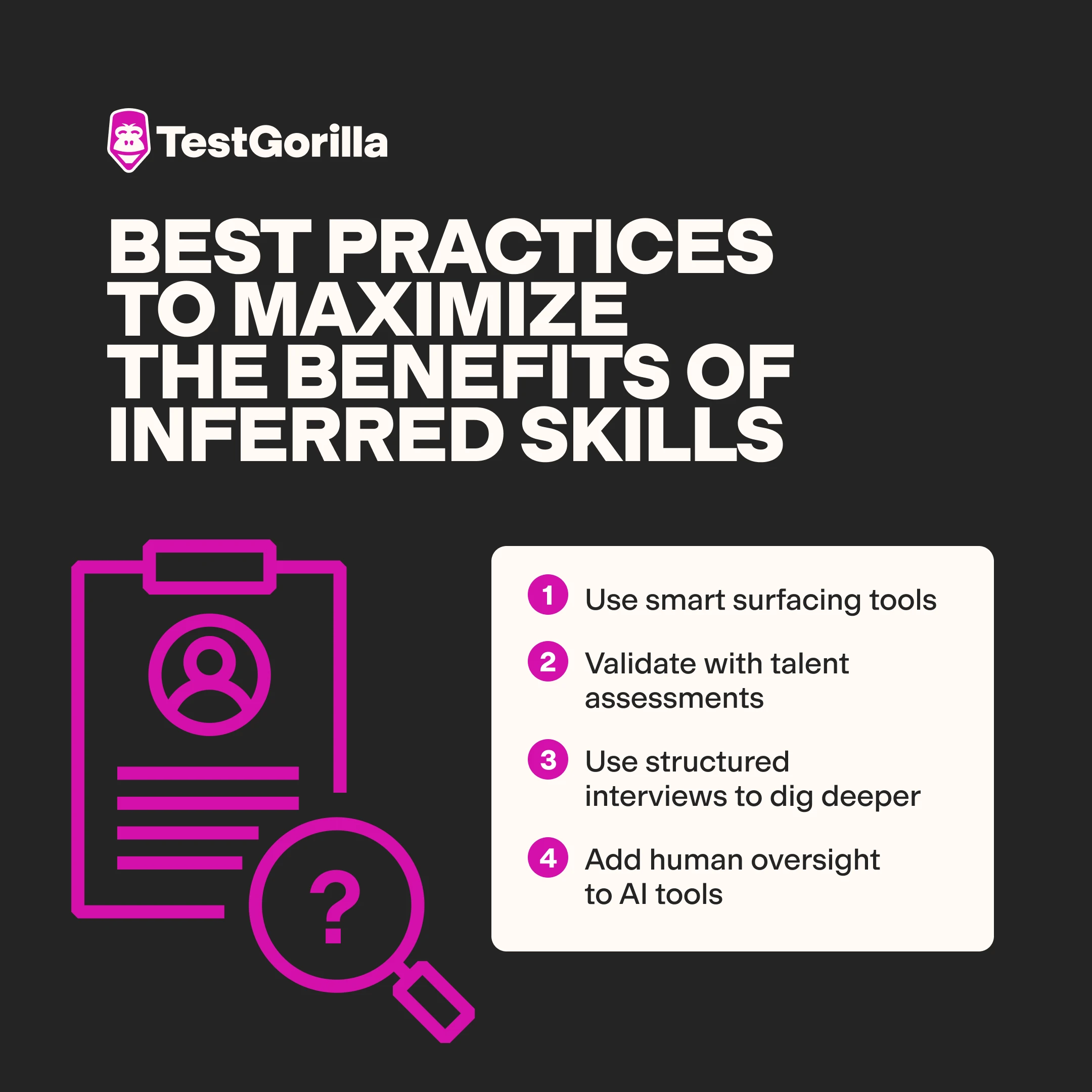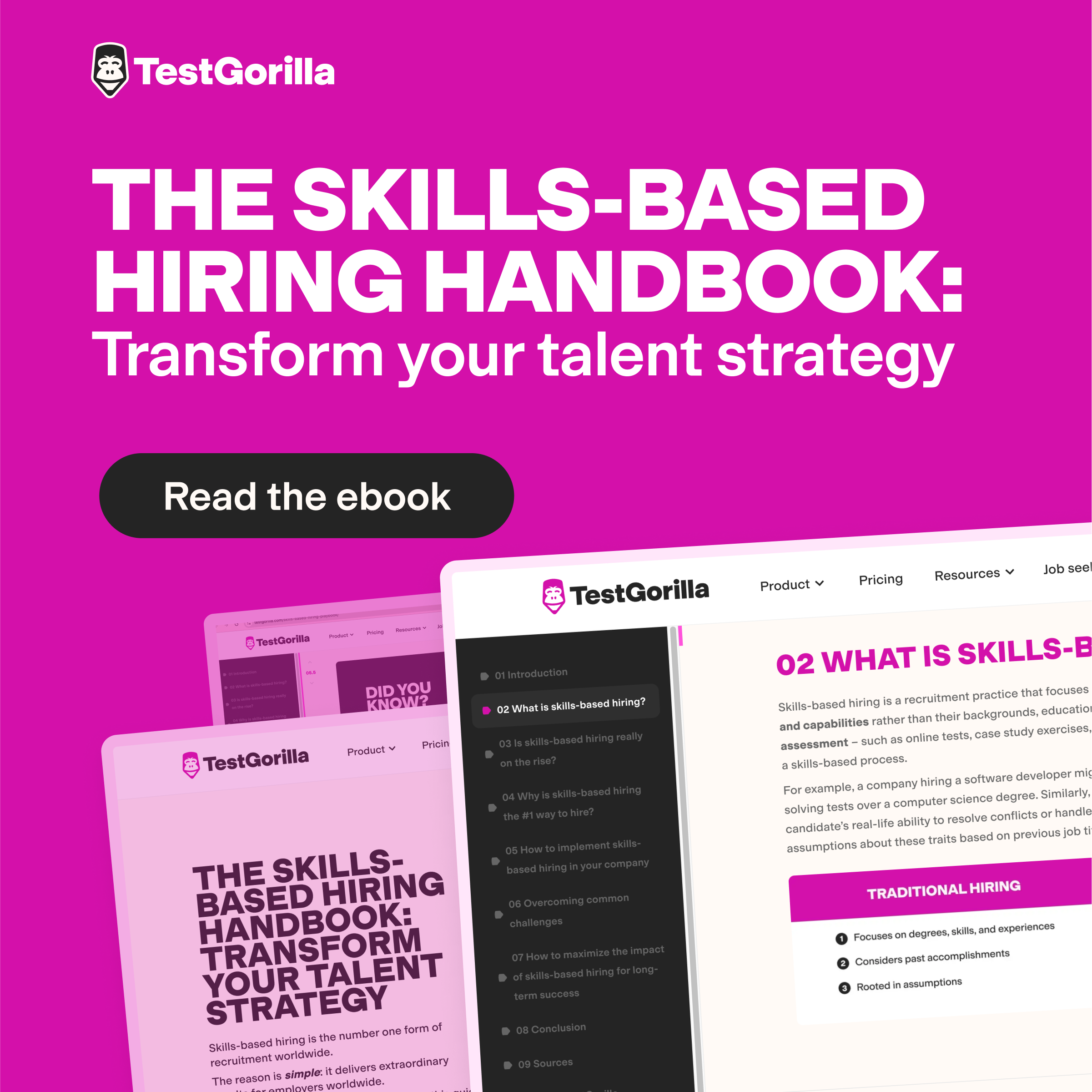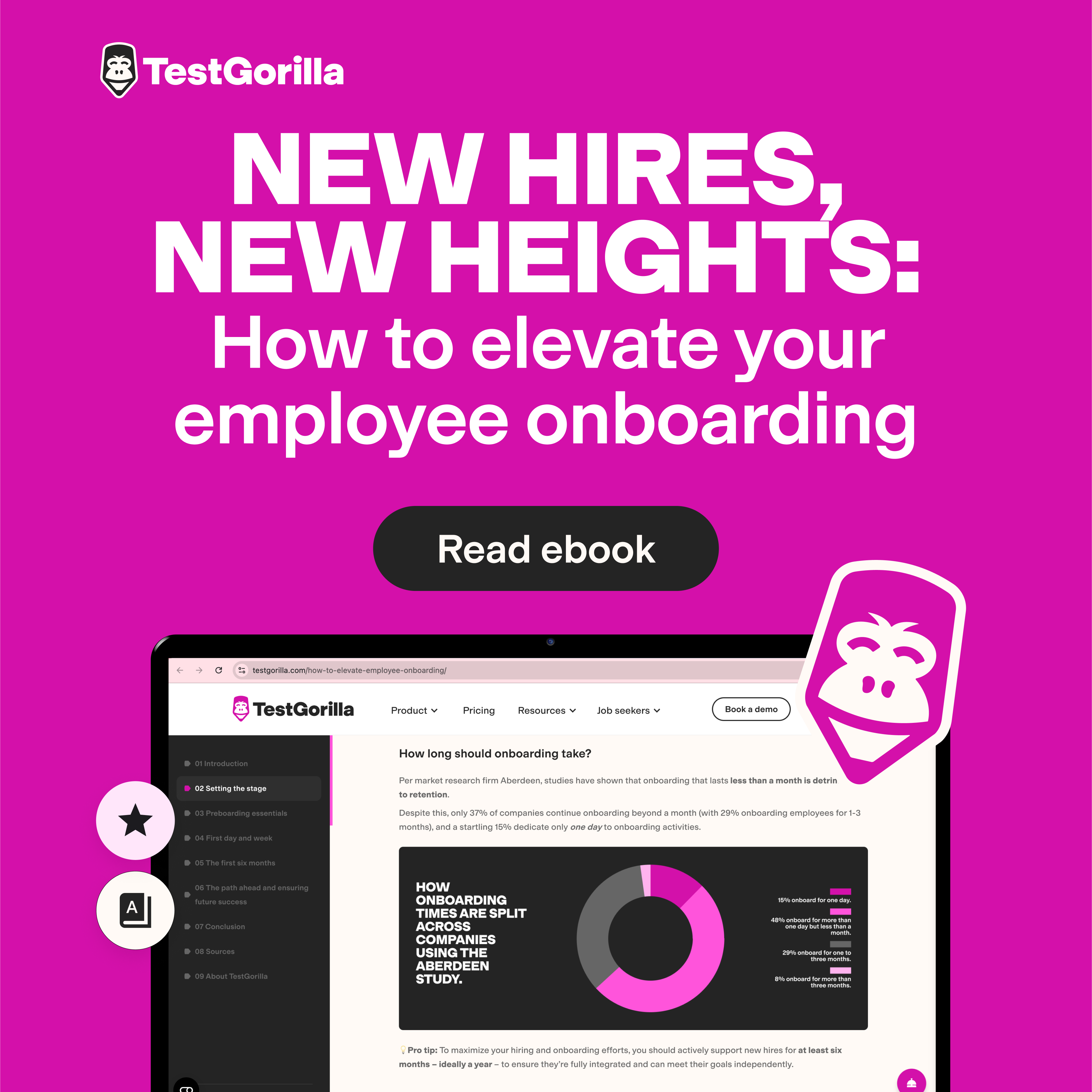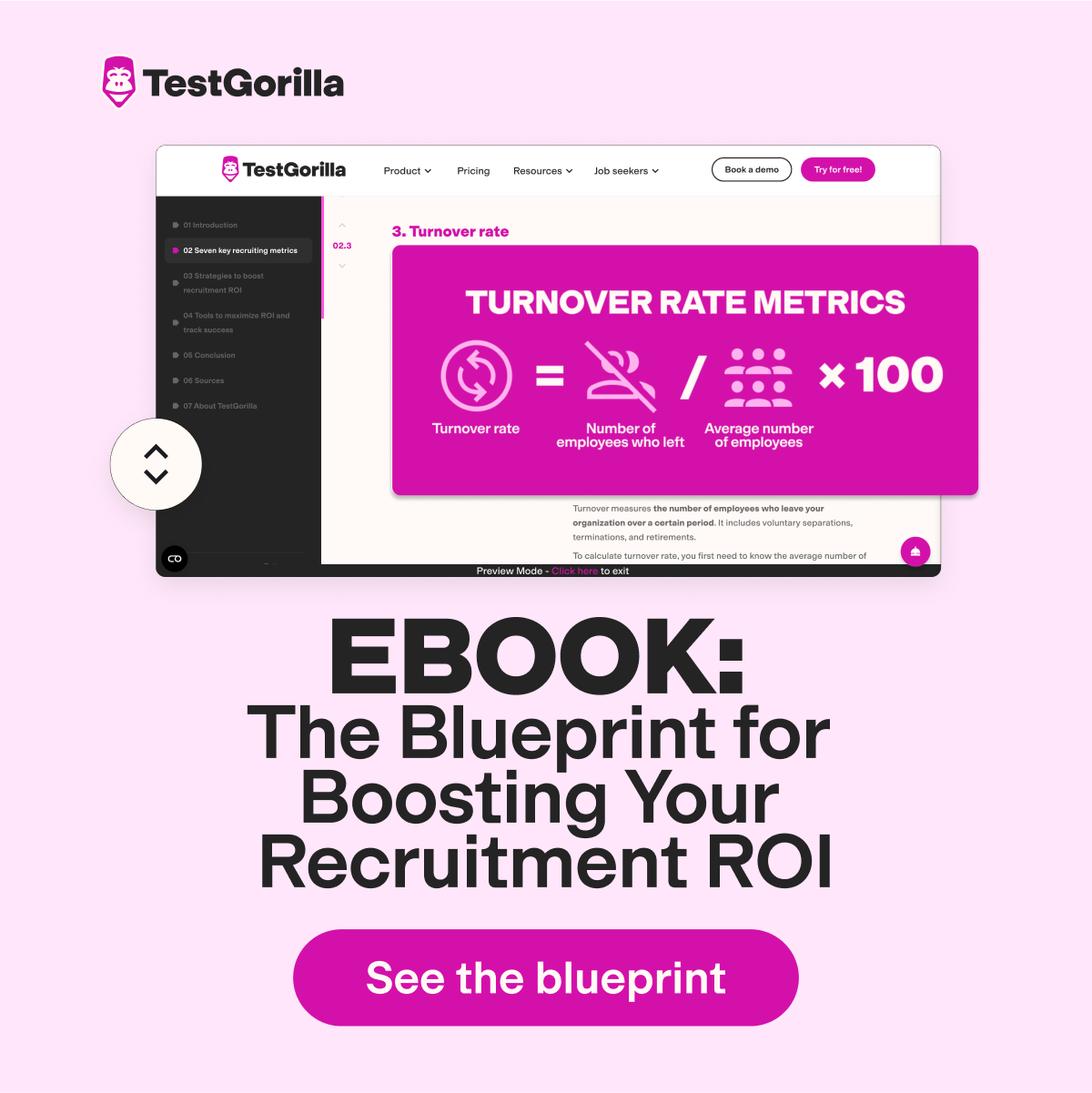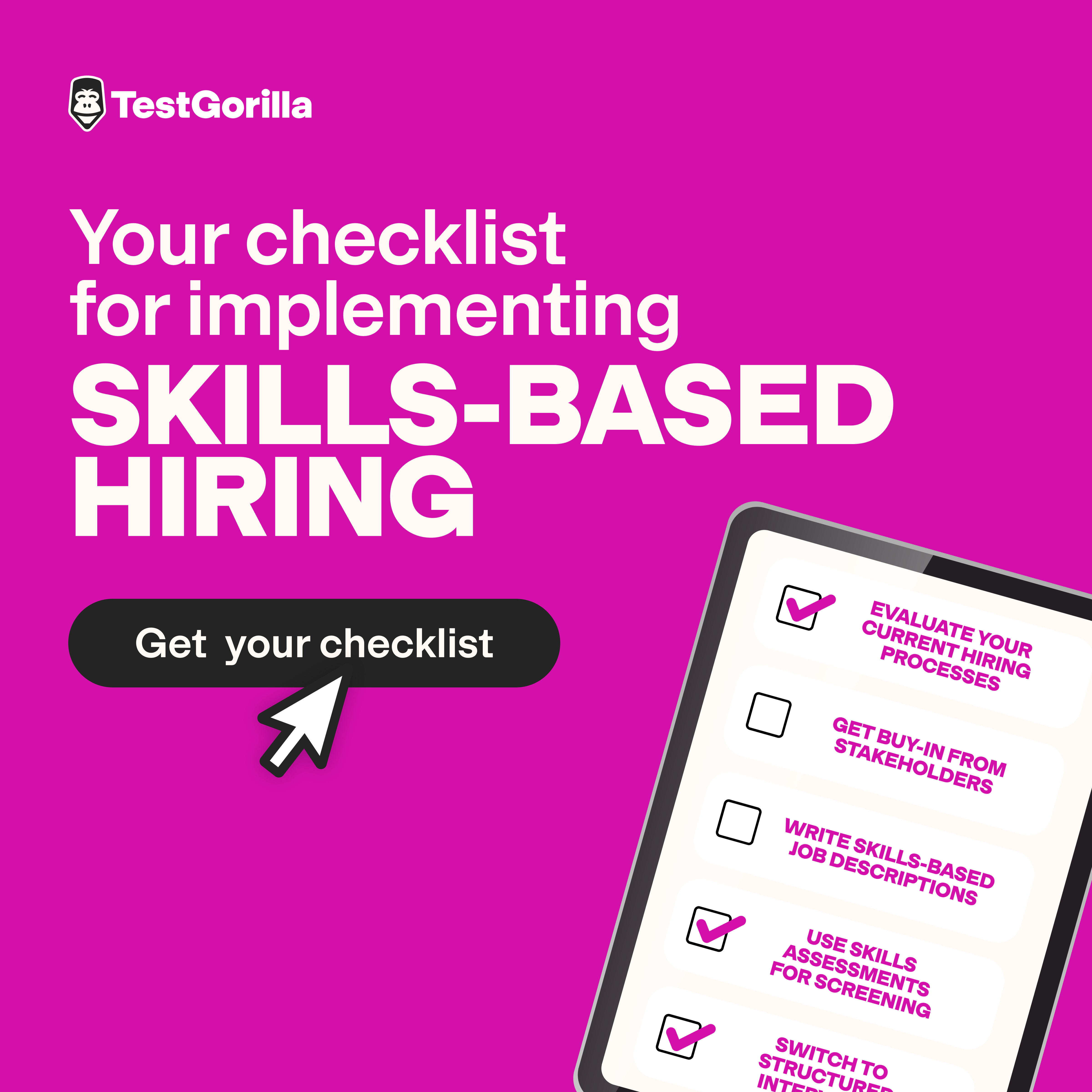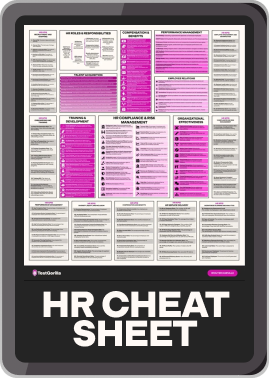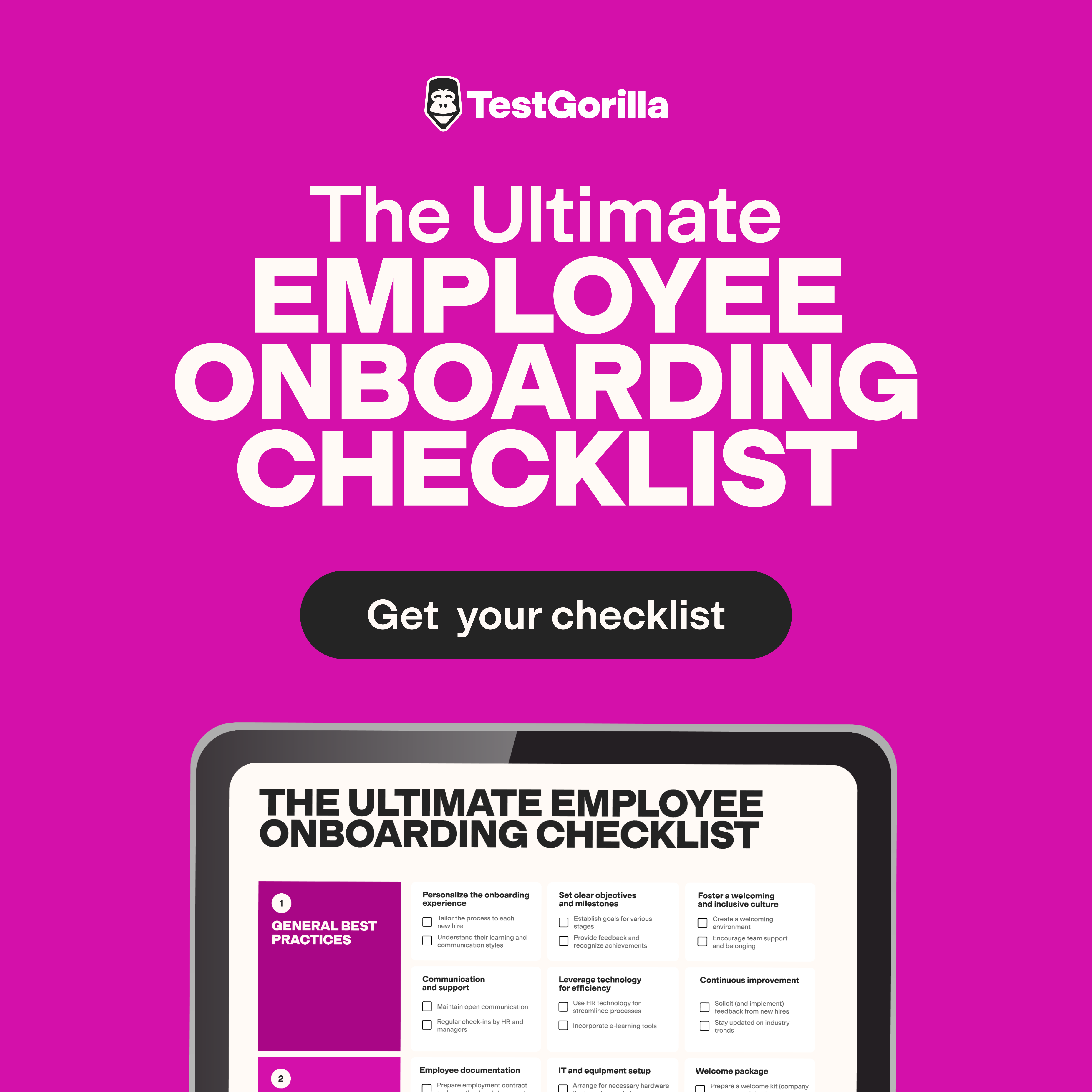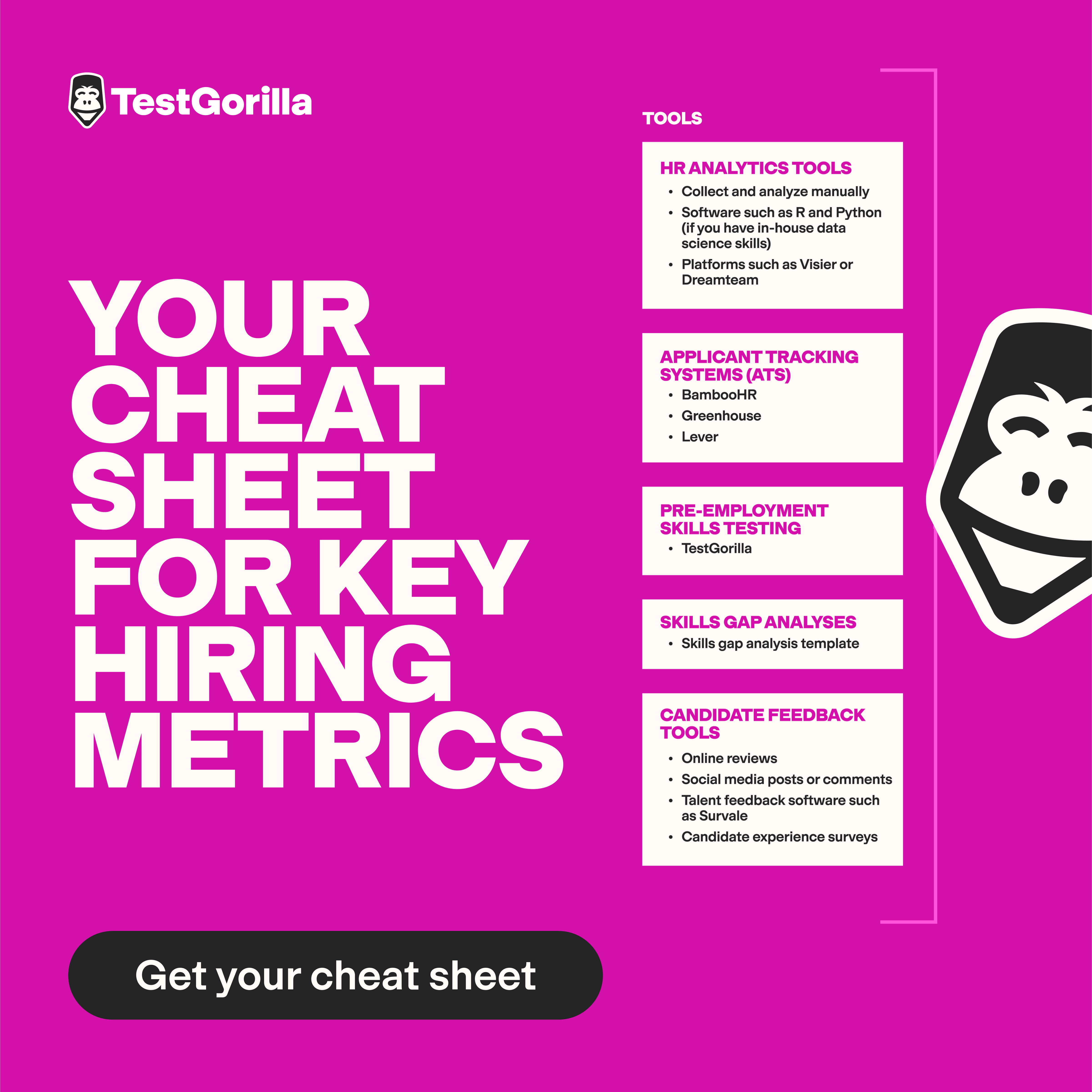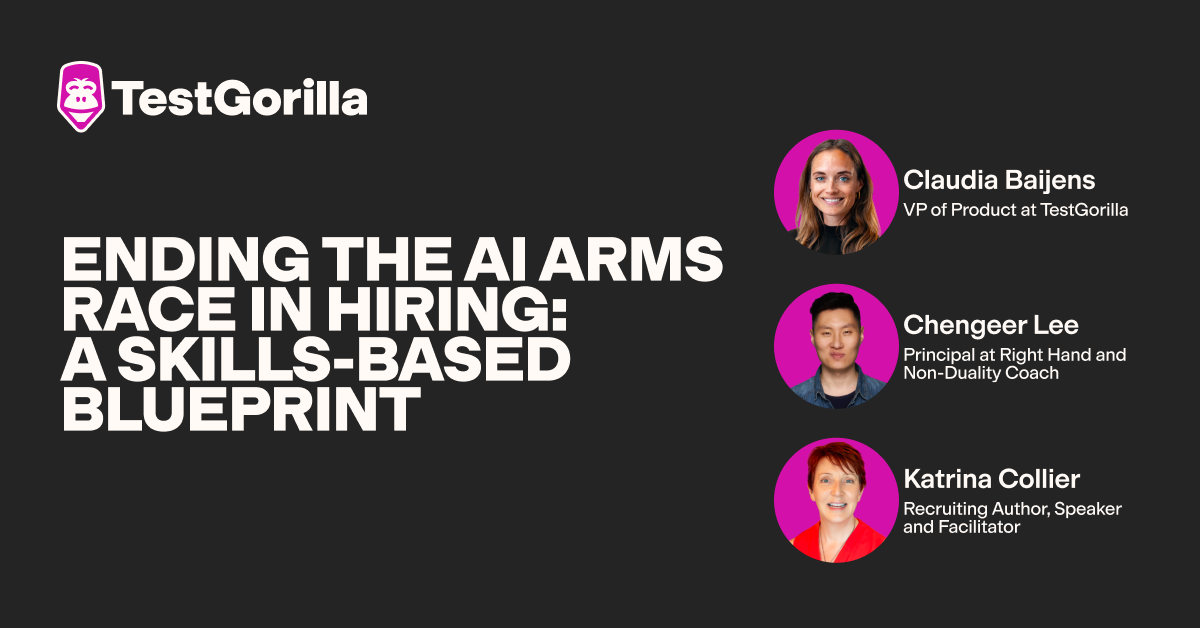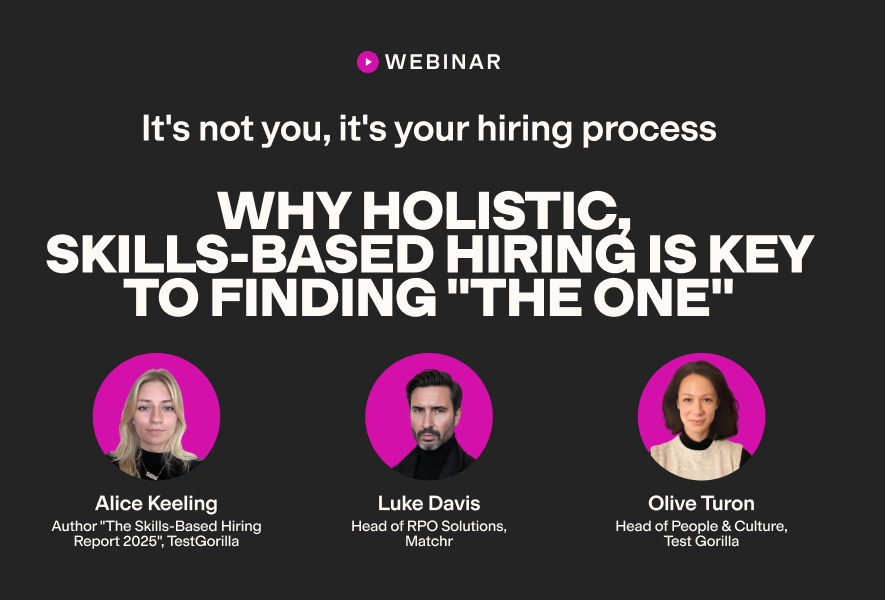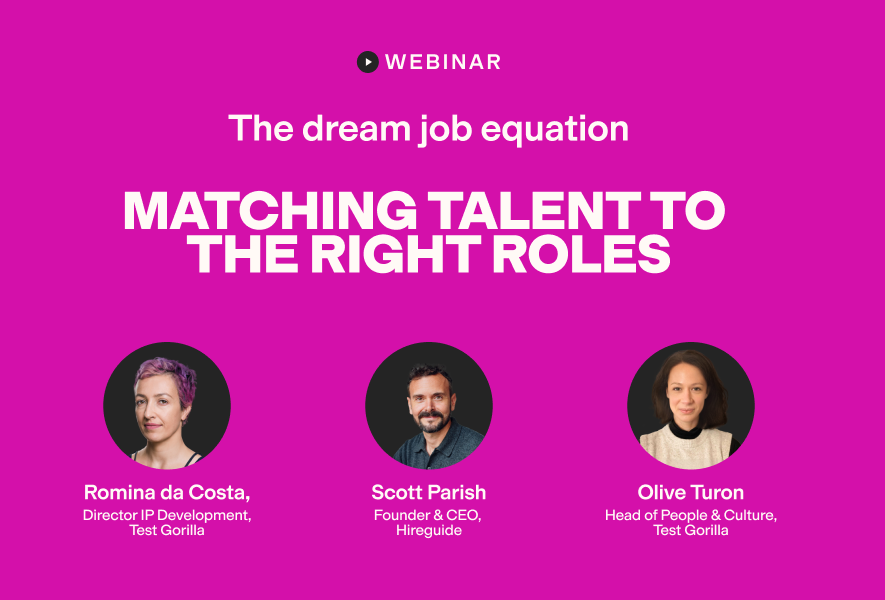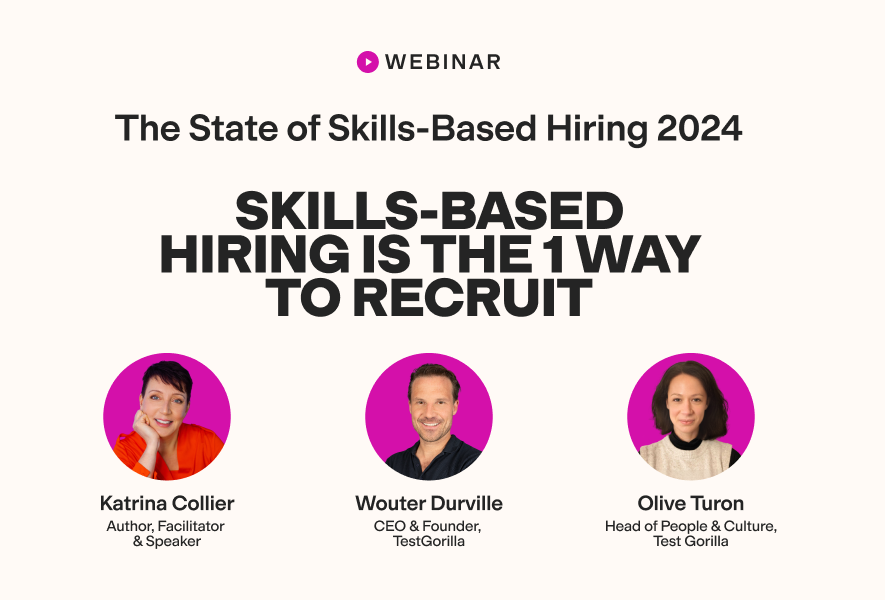Why inferred skills are gaining ground in modern hiring
According to our 2025 State of Skills-Based Hiring Report, 63% of employers say it’s harder to find great talent than it was last year. A shortage of skilled talent in the market and growing recruitment layoffs mean companies are working twice as hard to find good candidates and relying on hacks – like inferred skills – to snag them as fast as possible.
Done right, this hack can be a smart way to hire. But when inferred skills are used incorrectly, they can backfire and lead to poor selection decisions.
Luckily, there are ways to avoid this. Below, we unpack what inferred skills are, their pros and cons, and how to use them in your hiring process with maximum benefits and minimum risk.
Table of contents
What are inferred skills?
Inferred skills are candidate abilities that employers don’t directly test but rather deduce based on the applicant’s background, behavior, and digital footprint. Inferring skills is like making an educated guess about what someone is good at based on factors like previous knowledge, job titles, online activity, and so on.
This happens when employers or the tech they use spot certain keywords, behaviors, or experiences and connect the dots.
Here are some examples:
An artificial intelligence (AI) crawler scans someone’s LinkedIn profile and sees peer endorsements for “strong business strategies” – inferring that they have strategic thinking skills
Specialized software infers a candidate’s technical skills or creativity based on their work on websites like GitHub or Behance
A recruiter believes a candidate’s Meta microcredential in relevant skills indicates that the candidate is skilled in Meta advertising
An applicant tracking system (ATS) assumes a candidate has strong communication skills based on their well-written cover letter
An AI video interview analyzer spots resilience when a candidate stays calm during a high-pressure interview
A startup founder thinks someone could be a good social media marketing intern by reviewing their reels, posts, and other content on Instagram
A recruiter believes an applicant has strong critical thinking or analytical skills because they’ve won a hackathon before
Why inferred skills are gaining traction
Here’s why a growing number of employers are turning to inferred skills.
1. Quick wins = competitive edge
Inferred skills can cut time to hire by helping employers make quick judgments about candidates’ skills and abilities without lengthy testing.
This speedy recruitment can be an advantage in a fast-moving market, where the quicker you spot a strong candidate, the better your chances of landing them. (One study found that 39% of candidates had dropped out of recruitment processes because they were too lengthy.)
2. Shift to skills-based hiring
With fewer skilled candidates available due to the talent shortage, companies are opting for smarter ways to spot skilled people – including people who may lack formal degrees but have clearly demonstrated potential.
Instead of relying heavily on the educational link, more employers than ever (85%) have turned to skills-based hiring, where they focus on candidates’ real-life skills instead of backgrounds or credentials. While some employers test these skills, others infer them as a faster, scalable way to identify talent signals in high-volume recruitment.
Skills-based organizations open doors to more talented applicants who pursued careers outside their degree field or took non-traditional paths to gain their skills – for instance, online courses or hands-on experiences.
3. Shortcomings of resumes
Our latest research also revealed that 86% of US employers encounter difficulties with using resumes. Some find it hard to tell if candidates have the right skills or if resumes are even accurate, as candidates can forget to list essential skills or lie about their abilities. Meanwhile, others were overwhelmed from having too many resumes to read.
That’s why they’re inferring skills based on job histories, online presence, and real-life behaviors.
4. Factoring in soft skills and traits
In today’s work landscape, employers are looking for candidates with adaptability, resilience, strong communication, remote collaboration, work ethic, aligned values, and other critical skills for success.
According to our research, 60% of employers believe that soft skills are more important than they were five years ago, and 55% of them cite verifying these soft skills as their biggest hurdle in hiring. That’s why they infer these skills and attributes from candidates’ past experiences, behaviors, and online presence.
5. Fast advances in AI and hiring tech
More tools than ever can analyze patterns and behaviors to infer skills based on candidates’ social media profiles, websites, blogs, interview videos, and other information sources – bringing science, process, and skills together in an unprecedented way. We found that 70% of US employers are using AI in their hiring processes.
The best insights on HR and recruitment, delivered to your inbox.
Biweekly updates. No spam. Unsubscribe any time.
The role of inferred skills in a modern hiring strategy
Inferred skills play a part in the following aspects of the hiring process.
Passive and internal sourcing
Inferred skills make it easier to discover strong candidates – even if they’re not actively looking for jobs. AI crawlers can scan people’s public profiles on platforms like Medium, LinkedIn, GitHub, or other industry-specific forums for articles, posts, blogs, and portfolios.
These tools pick up on people’s core skills from metadata (endorsements, keywords, engagement, etc.) and flag potential matches to headhunters and recruiters who can then reach out to candidates.
Similarly, inferred skills can also support internal mobility. AI can scan current skills, performance reviews, employment histories, org charts, past projects, and training histories to identify people who have adjacent skills (skills related to or commonly developed alongside a target skill) or who are on a relevant skills journey – and recommend them for new roles, promotions, or other stretch opportunities.
We spoke to Tsvetelina Nasteva, a manager of Human Resources at Perfomalis, who put it nicely: “This trend matters because it changes how people get hired, promoted, and developed. If we get it right, it could open doors for people who might otherwise be overlooked.”
Initial screening
ATS tools can use natural language processing (NLP) to screen resumes, applications, cover letters, and profiles faster and give recruiters the low-down on which candidates could have the skills needed for the job.
With layoffs hitting HR and recruiting, fewer people are evaluating more candidates, so inferring skills is a welcome way to lighten the load.
Video interview analysis
Some online platforms now analyze recorded video interviews to infer soft skills and behavioral traits like communication, adaptability, or emotional intelligence. They use NLP and facial analysis tools to pick up on things like expressions, tone of voice, choice of words, and more, and rate candidates on specific qualities. This offers interviewers insights into skills and abilities while saving tons of time and effort.
Limitations of inferred skills
Inferred skills can cause more harm than good if you lean on them too heavily or use them incorrectly.
Here are a few limitations to keep in mind.
1. Inference ≠ validation
Tsvetelina Nasteva explained to us, “From my point of view, inferred skills can be helpful for spotting potential, but they’re not magic. Just because someone held a certain job or used a tool once doesn’t mean they’re skilled at it.”
And this is also true the other way around. For instance, an ATS might not add certain skill tags for candidates based on its findings, but that doesn’t necessarily mean they don’t have those skills.
2. Biases
Inferred skills help to make quicker decisions but can lead to biases if left unchecked.
Both AI and humans can misread or misinterpret data as skill signals. For example, an ATS might assume someone’s experience as a softball team captain indicates leadership skills when it doesn’t. A recruiter might assume someone who speaks in a similar style to them has strong communication skills.
There have also been several cases of AI perpetuating biases – for instance, Amazon’s resume screening tool was discovered to have shown biases against women.
Ultimately, these biases can lead to mis-hiring.
3. Flawed tools
Candidates may be filtered out or misclassified if inference tools are flawed or incomplete. The Society of Human Resource Management (SHRM) discussed the inaccuracies of facial analysis tools, citing HireVue, a video interviewing platform, as an example. HireVue’s facial analysis tool was removed due to concerns about its accuracy.
The BBC shared a real-life example of a highly-skilled candidate being rejected because HireVue detected unfavorable body language.
4. Neglect of cultural alignment and motivation
You can infer if someone’s a good communicator or leader, and even make guesses about more complex skills. Still, it’s harder to accurately judge if they have the right attitude, motivation, and values to mesh well with your company’s culture and people.
Imagine you’ve prioritized an applicant with leadership experience for a senior role in your company. If you don’t check what their leadership style is, you could end up with an authoritarian leader in what’s meant to be a participative culture.
How to combine inferred and verified skills for better hiring
Nasteva also rightfully pointed out, “Inferred skills are one of those things people are excited about, but they only work if you know what you're doing with them.”
Here are some best practices to maximize the benefits of inferred skills.
1. Use smart surfacing tools
Thoroughly research the ATS and AI-powered hiring tools you want to use in your hiring process to ensure they’re well-backed, have been tested properly, and have fewer errors and biases.
You can use these tools to scan applications, social profiles, and other digital activity to uncover candidate potential, especially for applicants who don’t tick all the boxes but show promise.
2. Validate with talent assessments
You must do skills testing to validate inferred skills – you can’t rely on inferences as proof of them. Platforms like Testforilla let you roll out online talent assessments to verify candidates’ hard and soft skills, cognitive abilities, behavioral traits, motivation, and even values.
In fact, if you’re worried about the risks of inferred skills, you can go straight to talent assessments, which screen and verify every one of your applicants quickly and objectively.
3. Use structured interviews to dig deeper
While talent assessments can help you validate candidates’ skills (e.g., management skills), structured interviews provide context – for instance, learning about the candidate’s management style.
You can ask candidates a fixed set of behavioral questions relating to their past experiences, hypothetical scenarios they could face in your company, and questions about their excitement for the role, values, or cultural expectations.
This gives you powerful insights into candidates’ thought processes, communication styles, leadership abilities, and what makes them tick – things that inference alone can’t fully capture.
4. Add human oversight to AI tools
Don’t let algorithms make decisions in a black box – whether it’s at the initial screening stage or when analyzing interviews.
Ensure you regularly audit your AI tools for biases by comparing their recommendations with actual outcomes – for instance, who got hired and how they performed. This, combined with skills testing, can significantly increase your chances of making better screening decisions.
Hire smarter, faster, and better with smart tools and skills assessments
Inferring skills with AI and other tools has become increasingly popular. But this process is prone to flaws and biases, so overrelying on it can result in mis-hiring, missed opportunities, and unfair decisions.
The best way to make the most of inferred skills while avoiding these risks is to combine them with structured methods – including TestGorilla’s talent assessments.
Want to learn more? Create a free account with TestGorilla to get started today.
You've scrolled this far
Why not try TestGorilla for free, and see what happens when you put skills first.


